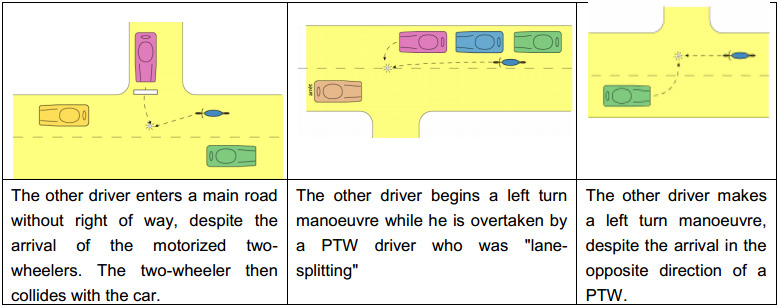
The objective of this paper is to discuss factors contributing to powered two wheeler (PTW) crashes. They are described under three main categories: road user (perception and awareness, atypical behaviour etc.), road environment (design, conditions), and vehicle. An exhaustive literature review of existing studies on powered two wheelers risk and contributory factors was carried out, in order to identify and quantify the impact of various factors on PTW crash and injury risk, with emphasis on the association of risk factors. The results reveal that human factors (e.g. driver and rider behaviour) are prevalent in PTW crashes, compared to vehicle and road factors. Road design and environment factors mostly influence accident severity (e.g. roadside obstacles and barriers, traffic calming installations) rather than accident occurrence. There is also a clear over-representation of perceptive problems in PTW crashes, which suggests a specific problem of detectability for these road users. Moreover, PTW are over-represented in impairment and speeding related crashes,
and there appear to be specific PTW behaviours that may surprise other road users – although such behaviours are not necessarily traffic-law-violating. Male, young and inexperienced riders are at higher crash risk. A stronger correlation of crash contributory factor is identified among PTW riders, compared to other road users, often resulting in coexistence of several risk factors in PTW accidents, and in multiplication of the related risk in these cases.
| ID | pc157 |
| Presentation | |
| Full Text | |
| Tags | international comparisons, motorcyclists |







